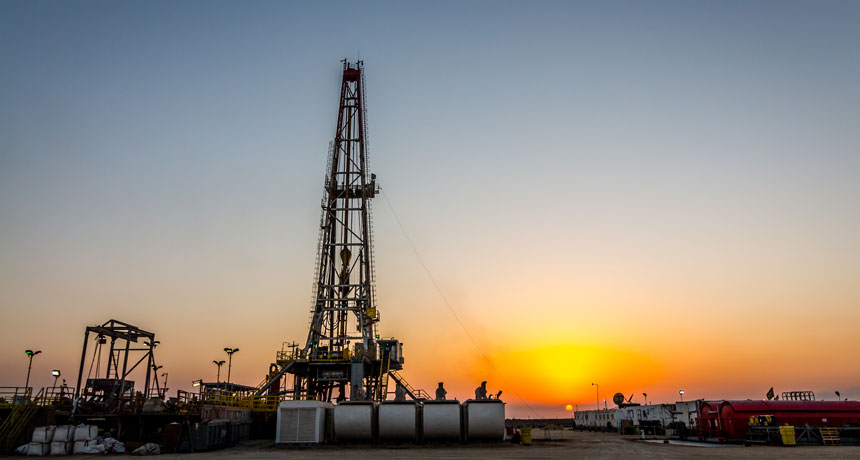
Fracking linked to low birth weight in Pennsylvania babies
Living near a fracking site appears to be detrimental to infant health, a study eyeing the gas production practice in Pennsylvania suggests.
Babies of moms living within one kilometer of a hydraulic fracturing, or fracking, site in the state had a 25 percent greater chance of being born underweight than did babies whose moms lived at least three kilometers away, researchers report online December 13 in Science Advances. The chance of having a low-birth-weight baby was 1 in 14 for the moms living closest to a fracking site, but 1 in 17 for moms three to 15 kilometers away, says Janet Currie, an economist at Princeton University.
For babies born to moms living within one to three kilometers away from a site, the chance of being underweight at birth was about 8 percent greater than for babies of the more distant moms, Currie says. The study found no ill effect on infants born to moms residing farther away, an indication that fracking’s health impact may be highly local. In the study, distance of residences from the fracking sites was used as a stand-in for potential pollution exposure. But the researchers did not measure actual pollution exposure, or figure out whether people faced exposure through water, air or both.
Pam Factor-Litvak, an epidemiologist at Columbia University not involved in the study, notes that it’s possible the associations between fracking and poor infant health could be due to other factors besides pollution, such as extreme levels of maternal stress, perhaps due to noise and continuous traffic to and from the sites.
“These results point to a concern of fracking,” Factor-Litvak says, but work remains to discover the mechanism behind the apparent connection to low birth weight. “There is a definite need to study the health effects of fracking accounting for the short-term changes in air quality, the possible long-term changes in water quality and the associations with stress.”
Fracking, which injects liquids underground at high pressure to extract oil and natural gas from hard to reach places, can contaminate water (SN Online: 10/12/15) and air, due to chemicals used in the process. Currie points out that hydraulic fracturing often moves into areas that didn’t previously have industrial activity, providing the opportunity to measure health effects before and after fracking begins.
Currie and her colleagues examined records of more than 1.1 million births in Pennsylvania from 2004 to 2013 to gather information about infant health as well as each mother’s residence and her race, education and marital status. The researchers took note of birth weight, which is often used as a sign of fetal health in studies of environmental pollution. Low-birth-weight babies, who weigh less than 2,500 grams, or 5.5 pounds, have a greater risk of illness and delayed development.
In addition, the researchers compiled information from the Pennsylvania Department of Environmental Protection on the locations of all of the active fracked sites in the state and when sites became active. As of 2014, there were more than 7,500 fracking sites, most of which went live after 2009. Pennsylvania produces 20 percent of the United States’ natural gas —second only to Texas — largely from fracking.
Currie and colleagues compared babies born to moms residing at different distances from fracking sites, as well as infants whose dates of birth fell before and after sites became active. The researchers controlled for the race, marital status and education of the mothers — factors that can contribute to low birth weight.
Babies born to moms who lived closest to fracking sites, within a kilometer, had the highest probability of low birth weight. Out of more than 6,500 births to moms residing one kilometer away from a site over the 11 years studied, nearly 1,800 occurred when there was active fracking. The researchers found that 5 percent of babies born to moms living within a kilometer of not-yet active sites were underweight, whereas 7 percent of births that happened after sites became active were underweight. There was no change in the percentage of low-weight births to moms three to 15 kilometers from a site before and after fracking.
The researchers also investigated how distance from fracking sites impacted an index of health measures, including prematurity and congenital anomalies. Those babies born to moms living closest to the sites were worse off.
“I don’t think we are going to ban fracking throughout the United States — it’s too economically important,” Currie says. But “knowing more about what the health effects are can help people to protect themselves” and inform policy regarding fracking.